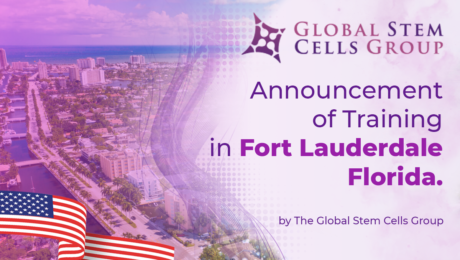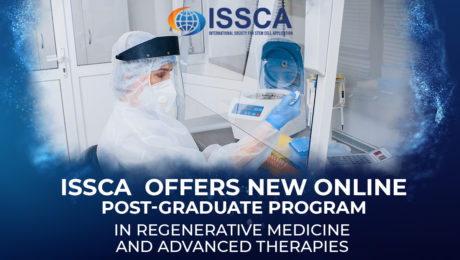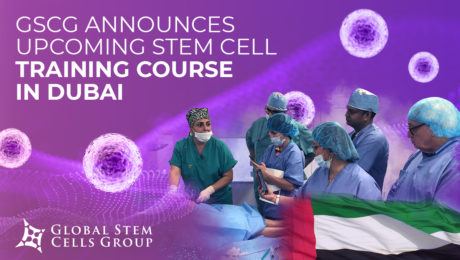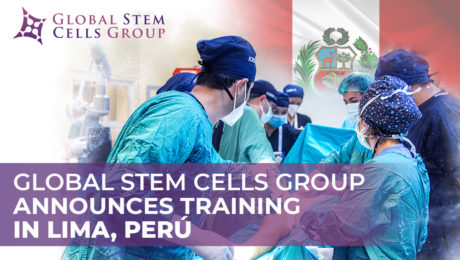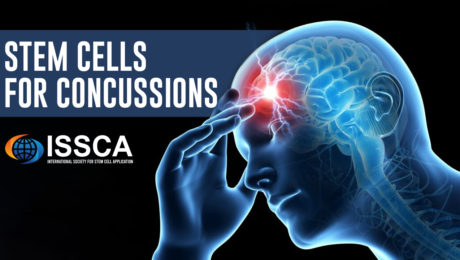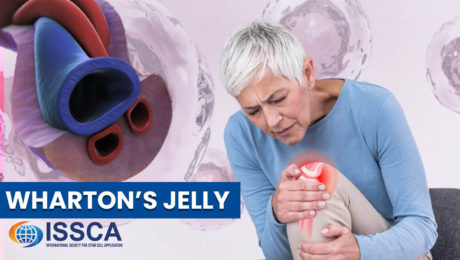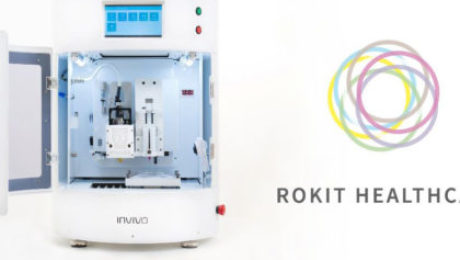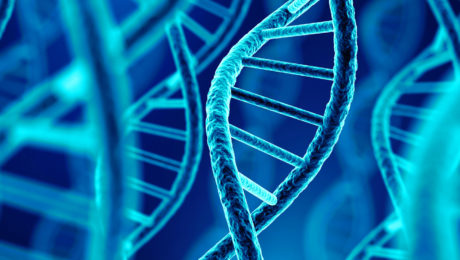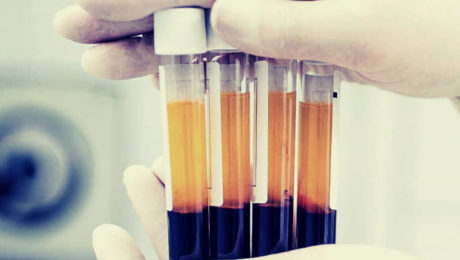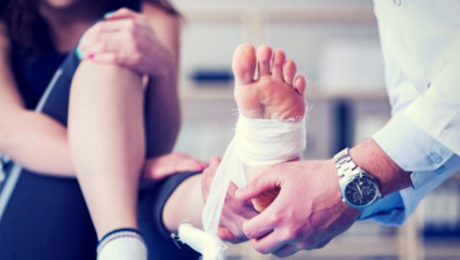Announcement of Training in Fort Lauderdale, Florida by The Global Stem Cells Group
Recently, the Global Stem Cells Group announced plans to teach physicians the value and process behind incorporating regenerative medicine into their own clinical practices. MIAMI, 4–5 November 2022—Global Stem Cells Group, a multidisciplinary community of scientists and physicians that are working together to cure diseases and relieve human pain through the advancement of the field of regenerative medicine, announced today a plan of training in Fort Lauderdale on November 4th and 5th. This training aims to equip physicians with the value and knowledge behind incorporating regenerative medicine into their own clinical practice. Benito Novas, CEO of GSCG, is confident that the event will bring together a group of:
- Doctors are seeking training, products, and equipment in regenerative medicine.
- Doctors who care for patients with conditions that can be treated with cell therapies
- Aesthetic doctors.
- Doctors who want to be up to date with the latest technologies and protocols
- Doctors with an interest in new research on stem cells, MSC, Exosomes, and medical networks want to attract more clients.
The training course is intended to cover:
- Hands-On portion: Doctors, in a controlled environment and guided by a team of medical professionals, will have the opportunity to see procedures being performed a few feet away and then get the opportunity to try them for themselves.
- Review of stem cell biology
- Characterization of cells, cell products, cytokines, and growth factors, as well as their capacity for regeneration.
- Laboratory Processes
- Clinical applications
- Product validation
- Practice Management
- Patient acquisition
The International Society for Stem Cell Application (ISSCA) has done intensive research on this topic and the team will take a lead in educating, training, and certification during the event. As a medical speciality, regenerative standards and certification are very important, which is why ISSCA will provide certificates after the training. By the end of the training course, you will understand everything you need to know to add adult stem cellbased procedures to your existing practice. As before, the united efforts of the seven major medical corporations will provide practitioners with a one-stop hub for stem cell solutions that adhere to the highest medical standards. To find more about the courses and to make reservations for this particular event, head on to their website www.issca.us/autologous-miami-november/ .us email info@stemcellsgroup.com or dial +1305 560 5337.
About ISSCA
ISSCA is a multidisciplinary community that brings together scientists and physicians, all of whom aspire to treat diseases and relieve human pain through advances in science, technology, and the practice of regenerative medicine. ISSCA serves its members through innovations made to the speciality of regenerative medicine. The ISSCA’s vision is to take a leadership position in promoting excellence and setting standards in the regenerative medicine fields of publication, training, research, education, and certification.
As a medical speciality, regenerative medicine standards and certifications are very important, which is why ISSCA provides certification training globally. This is because they want to encourage more physicians to practice regenerative medicine and make it accessible to benefit patients both nationally and worldwide. Incorporated under the Republic of Korea as a nonprofit entity, the ISSCA’s main goal is to promote excellence and standards in the field of regenerative medicine. As a physician, missing this chance to book a personalized hands-on training session must cost you dearly. Contact + 1 305 560 5337 to book as early as possible.
About Global Stem Cells Group
Global Stem Cells Group is the parent company of six companies that are dedicated to stem cell research, solutions, and technology training. The group was founded in 2012 and combines dedicated researchers, patient educators, and physician trainers with the shared goal of meeting the need for high-end stem cell solutions and treatments.
Given that the group has a singular focus in this field, it is uniquely positioned to become the global leader in cellular medicine. In addition, by bringing together leading professionals in cellular medicine, it can discover issues that the industry faces and focus its research and development in this area. This specialization has, undoubtedly, enabled it to come up with solutions that address some of the significant issues that most stakeholders are facing in the industry.
Global Stem Cells Group is a publicly traded company operating under the symbol MSSV. https://finance.yahoo.com/quote/mssv/
- Published in News
ISSCA Offers New Online Post-graduate Program in Regenerative Medicine and Advanced Therapies
With video lectures and additional tools from some of the most respected names in today’s stem cells field, the course arms practitioners with the necessary knowledge and resources to offer innovative regenerative medicine treatments in their existing practices.
MIAMI, Florida— The International Society for Stem Cell Application (ISSCA) has announced it has launched a new online Post-graduate Program in Regenerative Medicine and Advanced Therapies. The course adds to the group’s already existing robust offering of onsite and online courses designed to give physicians looking to incorporate regenerative medicine protocols into their practices the education and tools necessary to do so.
Regenerative medicine has been increasingly gaining attention in today’s fast-paced medical world. As more researchers and physicians become interested in studying the field and introducing treatment protocols into their practices, it can be difficult to know which products and practices yield the best results for patients seeking these treatments for relief from degenerative diseases, noted Dr. Silvina Pastrana, main professor of the program and medical director of the stem cell center in Buenos Aires. Knowing which products work for which conditions and how to safely administer them to maximize results are key in leading a successful regenerative medicine practice.
With the new online Post-graduate Program in Regenerative Medicine and Advanced Therapies and others offered by the ISSCA, physicians will learn these valuable protocols and more about product offerings and how to choose the most effective ones. The Post-graduate Program will prepare physicians with the necessary theoretical and practical knowledge needed to effectively and safely secure better patient outcomes when using cellular therapies. With this training, physicians will gain knowledge from leading scientists in the field, learn valuable information on safety standards and quality control from top manufacturers, be positioned to perform these procedures and open a Stem Cell Center practice, join the ISSCA’s network, and enjoy the benefits of an exponentially growing industry worldwide.
Physicians looking to enroll in this online Post-graduate Program and other offerings by the ISSCA are in good hands. The group is widely considered as the global standard bearer when it comes to education and research in the regenerative medicine field. For years, the ISSCA has played a critical role in bridging the gap between the science behind stem cells and regenerative medicine and the practical application of that science in a clinical setting.
“We are pleased to add the online online Post-graduate Program in Regenerative Medicine and Advanced Therapies to our growing number of course offerings designed to deliver the skills and education needed to practitioners eager to implement stem cells treatment protocols into their existing practices,” said Benito Novas, ISSCA VP of Public Relations. “The program gives physicians the skills needed to utilize these highly effective treatments to help patients suffering from degenerative diseases while expanding on the ISSCA’s mission to continue to serve as the premier educational resource for physicians across the globe looking to introduce stem cells treatments into their practices.”
To learn more about the ISSCA, visit www.issca.us. To learn more about the group’s new online Cellular Therapy course or to register, visit https://cursocelulasmadre.com/cursos-de-certificacion/posgrado-en-medicina-regenerativa-y-terapias-avanzadas/
- Published in News
GSCG Announces Upcoming Stem Cell Training Course in Dubai
The Global Stem Cells Group, a multi-disciplinary community of scientists and physicians that are collaborating to treat diseases and lessen human suffering through the advancement of the field of regenerative medicine has announced plans for a training in Dubai, UAE on November 11th-12th.
This training will be one of the second one of 2022, reaffirming the Global Stem Cells Group’s presence in Europe as a key player in the field of regenerative medicine. Members from both Global Stem Cells Group & the International Society for Stem Cell Application’s Dubai Chapter will be there to assist in expanding research for and the practice of regenerative medicine across Europe.
“We hope that more and more physicians and clinics will take up the benefits of regenerative medicine.As we continue to train patients with the GCell Machine, ” Says Benito Novas, founder and CEO of the Global Stem Cells Group
This training is intended to teach physicians the value and process behind incorporating regenerative medicine into their own clinical practice. This includes a theoretical portion that goes over basic regenerative medicine biology and its application, but also includes a Hands-On portion in which doctors, in a controlled environment and guided by a team of medical professionals, will have the opportunity to see procedures be performed just a few feet away, and then get the opportunity to try it for themselves.
This training will also teach physicians how to utilize the GCell Machine to perform regenerative medicine therapies. GCell is a tissue homogenization device that is revolutionizing the future of regenerative medicine. It is an extremely compact, all-in-one unit that can homogenize and isolate the stem cells from an adipose sample. GCell’s process of homogenizing with a system of precise blades and filtering ensures that the sample can be processed within an hour, with little input from the physician when the machine begins to do its work.
Once the process is over, the end result is a final product that can be administered to patients within an hour after the initial tissue extraction. This is a far cry from the previous, muti-hour long treatments that physicians have grown accustomed to, and the shortened timespan and simplicity of the procedure is something that both doctors and their patients will greatly appreciate.
If you are interested in enrolling in this upcoming event, or to learn more about the different training opportunities available, you can visit us at our training website.
About Global Stem Cells Group
Global Stem Cells Group (GSCG) is a worldwide network that combines seven major medical corporations, each focused on furthering scientific and technological advancements to lead cutting-edge stem cell development, treatments, and training. The united efforts of GSCG’s affiliate companies provide medical practitioners with a one-stop hub for stem cell solutions that adhere to the highest medical standards.
Global Stem Cells Group is a publicly traded company operating under the symbol MSSV. https://finance.yahoo.com/quote/mssv/
- Published in News
Global Stem Cells Group Announces Training in Lima, Perú
MIAMI,Florida—The International Society for Stem Cell Application (ISSCA) has announced plans to hold a Cell therapy Certification training course for qualified physicians in Lima on December 09 and 10, 2022.
Each participating physician obtains the intellectual property of 22 proprietary protocols that will them to treat degenerative and aesthetic diseases and conditions in their offices. Step-by-step videos of each protocol are provided to physicians for later referral.
Participating physicians acquire the skills necessary to offer an alternative therapy to patients with medical conditions for which no solution is currently available. ISSCA’s stem cell training course allows qualified physicians who earn certification to offer sought-after alternative treatments.
Successful completion of the ISSCA regenerative medicine certification course allows physicians to join a select group of practitioners at the forefront of medical science. Only 5 percent of physicians worldwide access to stem cell therapy studies, and so far only 0.01 percent are practicing these therapies.
The course also provides participating physicians with access to ISSCA’s online stem cell training course to review all content and procedures introduced during the two-day clinical training course, as well as patient forms and guidelines, procedures, informed consent forms, didactic lectures, training booklets, and more,
The ISSCA’s regenerative medicine protocols training course was developed for physicians and high-level practitioners to learn techniques in harvesting and reintegrating stem cells derived from patients’ adipose tissue and bone marrow.
Seating is limited to eight participants. Register today at the Lima Peru course website to secure a seat, email info@stemcellsgroup.com, or call +1 305 5605337.
About ISSCA:
The International Society for Stem Cell Application (ISSCA) is a multidisciplinary community of scientists and physicians, all of whom aspire to treat diseases and lessen human suffering through advances in science, technology and the practice of regenerative medicine. ISSCA serves its members through advancements made in the specialty of regenerative medicine.
The ISSCA’s vision is to take a leadership position in promoting excellence and setting standards in the regenerative medicine fields of publication, research, education, training, and certification.
As a medical specialty, regenerative medicine standards and certifications are essential, which is why ISSCA offers certification training in cities all over the world. The goal is to encourage more physicians to practice regenerative medicine and make it available to benefit patients both nationally and globally. The ISSCA is focused on promoting excellence and standards in the field of regenerative medicine.
- Published in News
The Potential Benefits of Stem Cells for Concussions – What You Need To Know (2021)
THURSDAY, 23 SEPTEMBER 2021 / PUBLISHED IN BLOG
Overview
Traumatic brain injuries (TBI), also known as concussions, are among the most frequent causes of death in the United States.
According to the Centers for Disease Control and Prevention (CDC), the number of emergency department visits related to TBI admissions, complications, and deaths increased by 53% in recent years.
People who can recover from TBI may experience irreversible neurological issues throughout their lives. As a result, they lose their autonomy and become reliant on other people to perform daily activities.
However, it’s not all doom and gloom. A few studies suggest that stem cell therapy could be beneficial in the management of TBI.
In this article, we’ll discuss everything you need to know about the potential effects of stem cell therapy in managing concussions.
How Can Stem Cells Help With Concussions?
For those unfamiliar with how stem cells function, here is a short description:
Stem cells can develop into any kind of tissue or cell, including those that don’t typically regenerate (e.g., heart cells, nerve cells). For instance, medical schools often teach that a person has the same number of neurons from the moment they are born to their death.
Although this assertion is not completely true due to the latest evidence that supports the ability of neurons to regenerate, the rate of regeneration is nowhere near enough to restore the damaged tissues caused by TBI or strokes.
To this end, researchers are using stem cells to create new neurons to help patients with TBI, multiple sclerosis, and other neurological disorders.
What is the Scientific Consensus on Stem Cell Therapy and Traumatic Brain Injuries?
Mesenchymal stem cells derived from the bone marrow, umbilical cord, or adipose tissues showed positive results in the management of concussions.
In a number of studies, the administration of stem cell therapy via the spinal cord showed real evidence of lesion improvement. Researchers used advanced imaging techniques such as functional MRI to objectify the changes.
Neuroscientists theorize that stem cells can replace the dead neurons, which helps with restoring some of the lost functions.
Today, hundreds of clinical trials are trying to unveil the full extent of how stem cell therapy helps with traumatic brain injuries.
Based on the available research, scientists advocate for the use of stem cell therapy in treating patients with severe concussions.
However, neuroscientists insist that stem cell therapy is only used in patients who failed to respond to conventional treatment methods.
Are You a Candidate for Stem Cell Therapy?
To see whether you are a candidate for stem cell therapy, contact us by clicking on this link. You will speak with one of our healthcare professionals in Cancun, México.
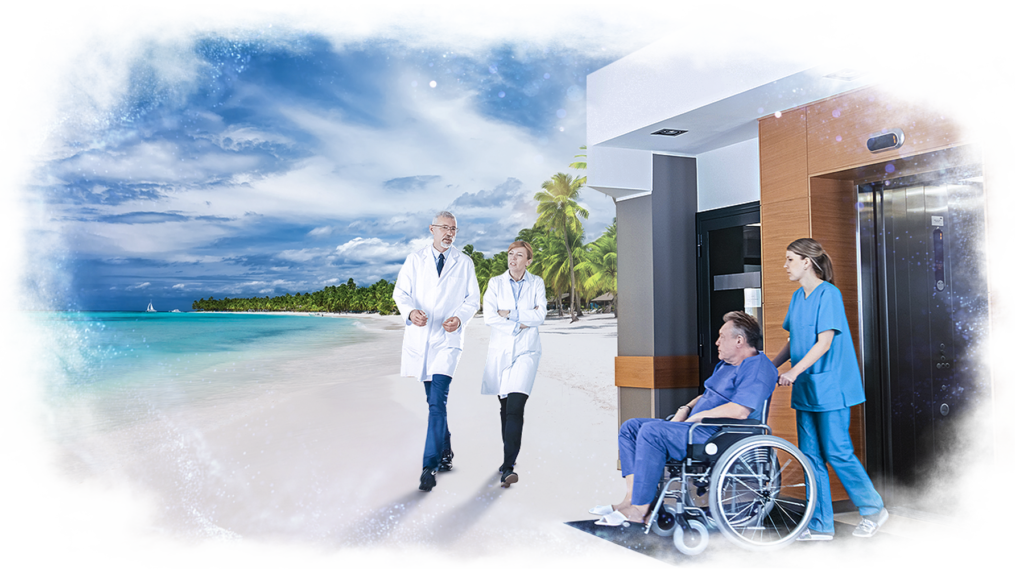
Takeaway Message
Stem cells have an amazing ability to divide into any type of tissue and potentially restore lost functions.
We hope that this article managed to highlight the potential role of stem cell therapy in addressing traumatic brain injury.
If you have any questions or concerns regarding stem cell therapy or TBI, please do not hesitate to share your thoughts in the comment section below.
- Published in Blog
Wharton’s Jelly – how does it work?
THURSDAY, 16 SEPTEMBER 2021 / PUBLISHED IN BLOG
What is Wharton’s Jelly?
Wharton’s Jelly is the substance that helps lubricate and support the umbilical cord. What makes Wharton’s Jelly so special is it contains high levels of mesenchymal stem cells. These special stem cells adapt to fit the cells needed to help regenerate damaged tissue and relieve pain naturally.
The Potency of Mesenchymal Stem Cells in Wharton’s Jelly
The mesenchymal stem cells that come from Wharton’s Jelly are among the most potent stem cells, rich in regenerative properties. Wharton’s Jelly also contains a good amount of collagen, hyaluronic acid, and anti-inflammatory properties, making them quintessential in regenerative medicine.
The Role of Regenerative Medicine
Regenerative medicine refers to treatments and medicine that are naturally occurring, including stem cell therapies. Mesenchymal stem cells are harvested from the Wharton Jelly found in the umbilical cord, donated by a healthy mother of a full-term baby. These stem cells contain all the regenerative properties needed to help the body heal and relieve pain naturally.
How Does Wharton’s Jelly Treatment Work?
Mesenchymal stem cells are injected into the body and have the ability to transmute into cells needed to repair damaged tissue and relieve inflammation. These cells harness potent regenerative properties that help rebuild the injured part of the body and provide long-lasting natural pain relief. Unlike pain medicines, which provide temporary relief that masks the symptoms and can be harmful if taken long-term, the stem cells found in Wharton’s Jelly are naturally occurring and natural to the body.
Best Uses for Wharton’s Jelly
Wharton’s Jelly is best used in patients with degenerative diseases and musculoskeletal injuries. The anti-inflammatory and regenerative properties work to repair damaged tissues, leading to lasting pain relief and restored function.
What to Expect from Wharton’s Jelly Treatment
Once a patient and doctor have decided on this type of stem cell treatment, patients can expect a relatively painless process. Stem cells are injected into the site and immediately go to work. Injections are virtually painless, and there are no known negative side effects. Patients can generally get right back to the activities they love. Doctors will discuss treatment plans based on individual needs, and in some cases, resting an injured area for a specific period may be needed.
The Effectiveness of Wharton’s Jelly Therapy
The mesenchymal stem cells found in Wharton’s Jelly have proven to be a very successful therapeutic method to treat several degenerative issues and injuries. This therapy is relatively painless, with no known negative side effects, making it an excellent choice in treatment. Instead of masking the pain with dangerous medicine, stem cell therapy offers a naturally occurring solution that aims to repair the damaged tissue and resolve the problem.
Learn More About Wharton’s Jelly Treatment
If you want to learn more about Wharton’s Jelly Treatment and how you can help your patients, you can check our next training course here: Wharton’s Jelly Training Course.
- Published in Blog
Global Stem Cells Group has Announced an Agreement with Rokit Healthcare
Global Stem Cells Group announces an agreement with the South Korean biotechnology giant known as Rokit Healthcare to represent the company’s technology in the Latin American market.
The Global Stem Cells Group (GSCG) a world leader in Regenerative Medicine Technologies has signed an agreement with South Korean-based Rokit Healthcare, an esteemed bioprinter manufacturer that is committed to advancing the field of regenerative medicine and bettering the quality of life of people around the world.
The field of bioprinting is an extremely new one, but it shows great promise. Simply, it is the automated, computer aided deposition of bio-materials (which are cells, growth factors, and biocompatible polymers) for the manufacturing of functional human tissues or organs. Growth factors are harvested and used with a proprietary printing technology to create or regenerative damaged or diseased organs. Rokit Healthcare does this primarily through the proliferation of a machine that they dub an ‘organ regenerator’– it looks like a 3D printer, but instead of using plastics to create things, they use cells and materials that will be safe to implant within the human body.
The process of 3D bioprinting human tissues and organs is a revolutionary technology in the field of tissue engineering. One of the major challenges in regenerative medicine research and tissue engineering is mimicking the micro and macro environment of human tissues. In response to this challenge, advances in additive manufacturing have inspired scientists in Korea to develop novel bioprinting technology, for human tissues and organs
With the advancements of 3D printing and regenerative medicine working together, the potential is seemingly limitless for the spreading of bioprinting technology, a process that is known as 4D Printing– and Global Stem Cells Group, in an effort make this revolutionary technology available to patients, has forged an agreement with Rokit Healthcare to promote, and distribute the company’s technology in Latin America-
The Invivo 4D Printer is Rokit Healthcare’s flagship product, and it is one that revolutionizes the application of regenerative medicine and growth factor-based therapies. creating a solution for personalized and improved patient care. By leveraging a combination of 3D and bioprinting technologies, it can better distribute a patient’s autologous tissues and cells, making it an invaluable tool for those that are looking to improve the efficacy of their results, especially for certain dermatological conditions including scarring.
“We’re extremely excited about this new opportunity and look forward to working with Rokit,” Says Benito Novas, CEO of the Global Stem Cells Group, “The Invivo 4D Printer is in a position to turn the practice of regenerative medicine onto its head, and we are planning on creating a training center in Cancun, Mexico exclusively to showcase and instruct other physicians in this cutting-edge technology,”
About Global Stem Cells Group
Global Stem Cells Group (GSCG) is a worldwide network that combines seven major medical corporations, each focused on furthering scientific and technological advancements to lead cutting-edge stem cell development, treatments, and training. The united efforts of GSCG’s affiliate companies provide medical practitioners with a one-stop hub for regenerative medicine solutions that adhere to the highest medical standards.
Global Stem Cells Group is a publicly traded company operating under the symbol MSSV.
https://finance.yahoo.com/quote/mssv/
About ROKIT :
ROKIT Healthcare is a global healthcare company that is committed to providing an effective and autologous organ regeneration platform. In order to undertake this daunting task, the company uses proprietary biofabrication technologies that show promise in treating several types of diseases in the field of regenerative medicine. Through the proliferation of 4D bioprinting technology, autologous stem cell technologies, ROKIT Healthcare believes that supplying an avenue for organ regeneration will drastically change the way that everyday people trust and manage their own body.
- Published in News
What’s all the fuss about Regenerative Medicine?
Understanding Regenerative Medicine
Explore the concept of regenerative medicine and its role in healing various ailments using the body’s natural processes.
Benefits of Regenerative Medicine
Discover why patients are turning to regenerative medicine for non-invasive treatments with minimal side effects.
How Regenerative Medicine Works
Extraction and Application of Platelet-Rich Plasma (PRP)
Explain the process of obtaining PRP from a patient’s own blood or tissues and its application to promote healing.
Patient Experiences with Regenerative Medicine
Testimonials and Success Stories
Share real-life accounts of patients who have benefited from regenerative medicine treatments, highlighting their positive outcomes.
Future of Regenerative Medicine in Healthcare
Predictions and Trends
Discuss the potential growth and importance of regenerative medicine in future healthcare practices, likening its impact to groundbreaking medical advancements like penicillin.
Training and Implementation in Medical Practice
Integrating Regenerative Medicine
Explore how physicians are incorporating regenerative medicine into their practice through specialized training courses to enhance patient care.
Comparing Regenerative Medicine to Traditional Treatments
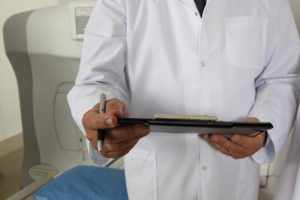
Advantages Over Conventional Medicine
Highlight the advantages of regenerative medicine over traditional medical approaches in terms of effectiveness and patient satisfaction.
Conclusion: Embracing Regenerative Medicine
Summarize the potential of regenerative medicine to revolutionize healthcare by offering effective, non-invasive treatments with fewer side effects.
References
Ensure comprehensive citations and references to support claims and information presented about regenerative medicine.
- Published in Blog
7 PRP Treatments That Are Popular Right Now
TUESDAY, 10 APRIL 2018 / PUBLISHED IN BLOG
The time it takes to draw a patient’s blood, add a little citrate, and use a centrifugal machine with a PRP kit is only 15-20 minutes. This is the amount of time needed to create Platelet-Rich Plasma, or PRP. This can then be used for many purposes, including speeding up a patient’s recovery. PRP is by far the best healing agent that has growth factors and platelets to help with the healing process, which is also completely free and natural to obtain.
What are The Advantages Of Using PRP Correctly?
It is easy to create PRP simply by placing blood in a centrifuge, but it can have very few, if any, platelets and would otherwise be useless. However, with the right equipment, you can make PRP with up to 7x the amount of platelets. This can be amplified by using fat tissue and collagen fibers to create a PRP matrix.
7 Popular PRP Treatments
1. Facial Treatments
Many skin centers are thriving due to being one of the first to adopt PRP therapies. With the lack of side effects or downtime, it became incredibly popular. These treatments include wrinkle reduction, skin rejuvenation, dark circle and bag erasure, rosacea treatment, and even lip augmentation. One popular and generic treatment option includes combining PRP and a treatment known as microneedling. When this is applied, its effects are similar to Botox or facelifts, for far less cost and side effects.
2. Hair Loss
PRP growth factors can be beneficial when it comes to reversing non-genetic early-stage hair loss. Despite there being a huge market for this, almost no practitioners actually utilize it. Many clients have seen promise after hair thinning, and many have seen beard regrowth over time.
3. Arthritis and Cartilage
Arthritis treatments alone cost patients 6.4 billion dollars in 2013 for the US alone, with projections of up to 9 billion by the end of the decade. However, unlike other treatments, PRP is seen as the only treatment that can not just reduce symptoms but also regrow the cartilage. One of the most popular examples would be treatments for Temporomandibular Joint Osteoarthritis.
4. Anti-aging Properties
When it comes to the anti-aging market, there are endless treatments and procedures available. Yet, none of them even stand close to the effectiveness of PRP therapy. PRP combined with microneedling can be highly effective for stretch marks, acne scars, breast augmentation, and even skin conditions like Lichen Sclerosus.
5. Pain Relief and Musculoskeletal Healing
There are numerous treatments in this category, many of which are incredibly more effective than leading treatments. These include healing rotator cuffs, tennis elbow, Achilles tendonitis, patellar tendonitis, back pain, hip and pelvic problems, degenerative disc disease, golfer’s elbow, labral tear, bursitis, neck pain, avascular necrosis, and even pain related to nerve regeneration. Almost all of these treatments, unlike those in other categories on this list, also use ultrasound guidance when injecting the PRP directly into the affected tissue. This can allow patients to see fantastic results in as little as two weeks.
6. Fertility
Ovarian rejuvenation is where PRP is injected directly into a woman’s ovaries. This is meant to help reverse menopause and help lower fertility issues. This treatment can even be used for sexual regeneration. Although similar, this treatment is not the same as other treatments where PRP is injected into the vagina and is supposed to treat looseness, dryness, low sex drive, and incontinence.
7. COPD (Chronic Obstructive Pulmonary Disease)
Allergies, asthma, and COPD are among the growing list of conditions that PRP is being used to treat. For this to work, the PRP is mixed with a saline solution and then, using a nebulizer, inhaled, helping to regenerate lung tissue. Although it can take up to two months for patients to see the effects, many are seeing improvements. Almost 1 million people suffer from COPD a year, so anything that can help treat the condition is beneficial.
The Future of PRP
PRP has been trending rather well in recent years and seems to be here for the long term. Not only is it a fully natural remedy, but it is one that works better than most, if not all, traditional treatments. Many like it due to the fact that there are few side effects, it only takes a short amount of time, and there is no recovery period.
PRP has been adopted by thousands of clinics and practices throughout the US and the world. The demand for these treatments has been increasing almost faster than practices are choosing to provide them. Many patients are even willing to travel long distances just to receive these treatments.
So, are you providing PRP treatments yet?
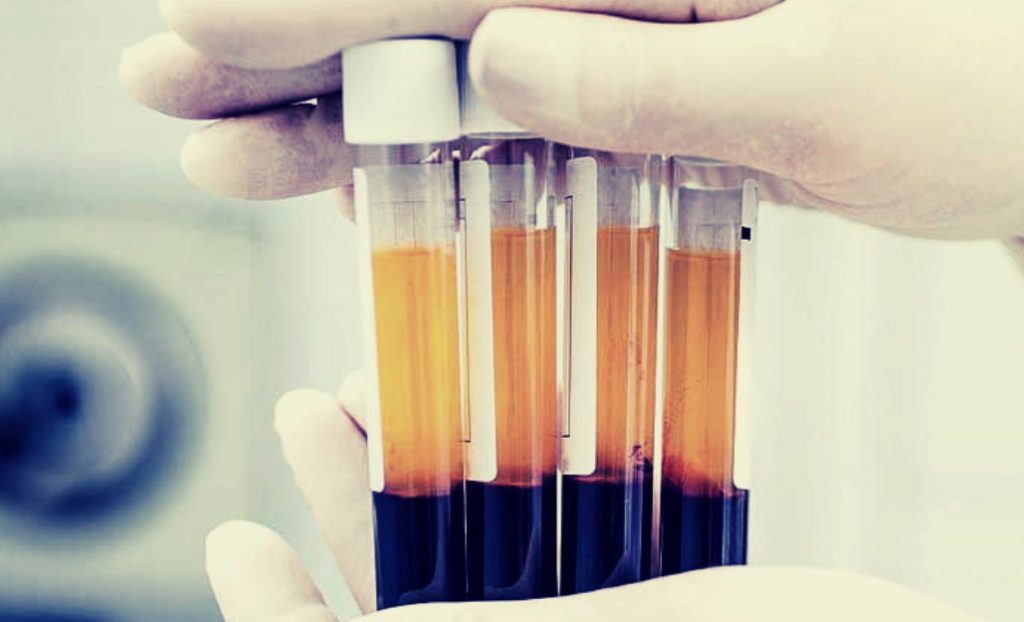
- Published in Blog
How Foot and Ankle Surgeons Can Benefit From PRP
TUESDAY, 03 APRIL 2018 / PUBLISHED IN BLOG
Since it is a new science, many people are skeptical about Platelet-Rich Plasma, otherwise known as PRP. There are some studies out there that state that PRP works no better than a similarly administered placebo, but there are many other studies and doctors that claim that PRP works and works well. This also works well at a much lower cost and with fewer side effects than traditional medicine. One branch where the skepticism is loud and clear is podiatry, which deals with feet and ankles. Trying to combat this skepticism can help many surgeons to lower complication rates, improve patient satisfaction, and have better outcomes. For instance, here is a list of cases where PRP has been effective for the feet and ankles.
Plantar Fasciitis
PRP has become rather common as a treatment for Plantar Fasciitis, with many studies to prove the efficacy of this treatment. For instance, Dr. Daanial Kassicieh of Sarasota Neurology claims that PRP is one of the most effective treatments for this condition and that PRP can actually fully cure it. Many of his patients have avoided surgery just by utilizing PRP therapy. This is done with no downtime, no rehabilitation, and no side effects. This would explain why plantar fasciitis is the 5th most popular medical condition treated by PRP. This can be explained by the fact that over 3 million people are diagnosed with this condition and no other treatment really works for it besides, in fact, PRP.
Achilles Tendonitis
This is another condition that can be fairly hard to treat and gets worse over time unless healed. Many surgical approaches are often tricky and generally do not end up with good results. Because of this, the main treatment option is simply to give patients corticosteroids to reduce the pain, but really nothing else to treat the symptoms. However, there have been many studies done that have shown that PRP is a lot more effective, including those from the European Foot and Ankle Society. This means that PRP is a safer and more effective alternative than any other treatments available.
Diabetic Foot Ulcers
Diabetic foot ulcers can be troublesome, especially when they do not heal or heal properly. Over 2.5 million Americans with diabetes suffer from these ulcers. About 11% of these cases may need amputation of the affected limb. However, some studies have noted that just one injection of PRP and a topical solution bi-weekly started to heal the ulcers in just 8 weeks. Topical PRP has also been shown to work better than antiseptic creams as well.
Regenerating Bones
Bone regeneration is most commonly needed in the foot and ankle area. Although mechanical stabilization works best, the utilization of PRP has been surprising. PRP helps with healing bones and soft tissue at the damage site. According to a recent systematic review of 64 articles, the conclusion was to include more PRP therapy into the healing of foot and ankle bones. The science behind this is solid. For bone or tissue to form, three things are needed in the area:
- A scaffold for the growth to take place
- Biological stimulants to signal proteins
- Stem cells that provide bone-building potential
All three of these are crucial for bone formation. PRP can provide at least two of these, so there is no reason to ignore it when it comes to bone regeneration.
Ankle Sprains
This is an incredibly common condition and can be effectively treated by using PRP therapy. In one randomized controlled trial, researchers studied the effects of PRP injections on athletes with ankle sprains. This study showed that not only did PRP reduce the healing time by 20 days, but they also experienced much less pain. This can reduce the recovery period from 6 weeks to just about 2 or 3 weeks.
Immobilization is Vital
When it comes to foot and ankle-related injuries, one thing that really cannot be avoided is rest and rehabilitation. This is true regardless of whether PRP is administered. Because of this, many of the studies that show PRP to be ineffective often don’t use rest and rehabilitation, and that alone can be an issue. PRP is in no way a magic pill. All foot injuries need rest and rehabilitation in order to properly heal. With these two combined, it can drastically reduce healing times.
How Can Foot and Ankle Surgeons Benefit?
Using PRP in foot and ankle injuries is not going anywhere, so utilizing it would be the best way to go. Test it out with your patients, and try using platelet-rich plasma therapy instead of simply prescribing pills or doing costly surgeries. Your patients will thank you in the end.
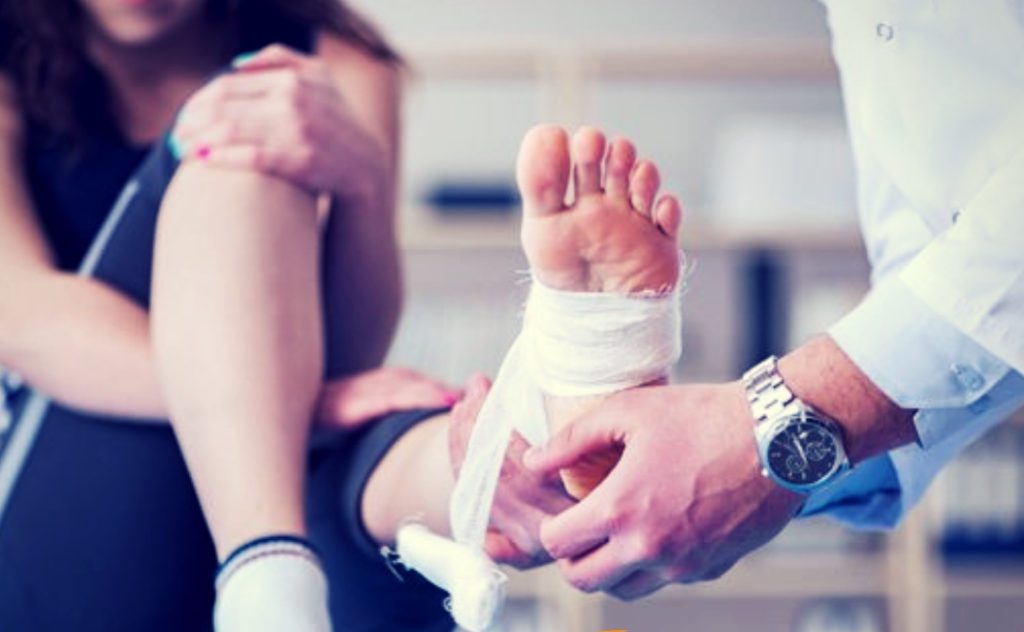
- Published in Blog


